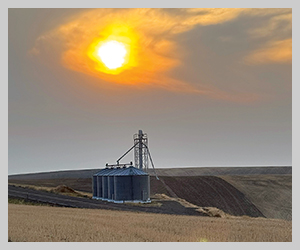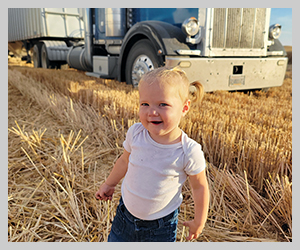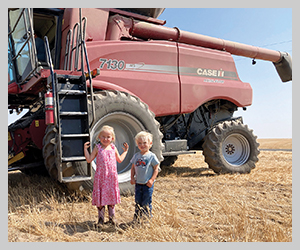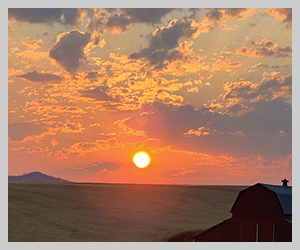Climate, Carbon efforts in the crosshairs A look at what’s happening at the federal level
2021December 2021
By Trista Crossley
Editor
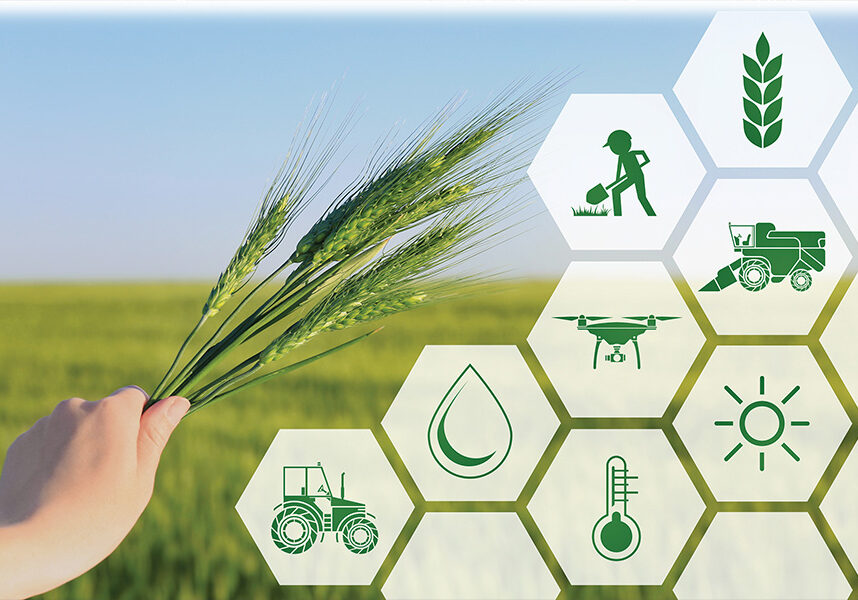
Nearly a year into the Biden Administration, efforts focusing on climate, clean energy and carbon markets continue to ramp up. The Washington Association of Wheat Growers works through the National Association of Wheat Growers (NAWG), the national wheat industry organization, to monitor these efforts and to provide feedback.
Jacob Westlin, NAWG’s vice president of policy and communications, said the organization has been working on these issues through a Special Committee for Sustainability and Climate (SCSC), which has been meeting regularly since spring. At the organization’s fall meeting in November, the SCSC updated NAWG’s board of directors on its progress and put forward some recommendations, which were adopted by the board as policy resolutions. In general, NAWG supports science-based, flexible approaches that recognize a one-size-fits-all solution won’t work. As Dave Milligan, NAWG’s president, said recently in a congressional hearing on voluntary carbon markets, “The carbon credit will be generated on the farm. The farmer needs to have an equitable return as the carbon credit increases in value.”
“We support voluntary, market-based programs that provide economic opportunities for farmers, and programs that recognize the achievements for growers in protecting and restoring the environment,” Westlin said. “Also, our position is these programs need to reward early adopters when they are considering adding new practices.”
NAWG is looking into a lifecycle assessment by a land-grant university that would look at the available data and help assess the environmental impacts of conservation practices.
“We really see that as being a tool to help tell our story with more meat, more numbers behind it, so when we are getting questions from Capitol Hill lawmakers and our federal partners, we have that background and analysis to help back up the claims we are making,” Westlin said. “We have a lot of good and unique stories we think we could tell, but this would help us provide more credible information, backed by a land-grant university, to answer many of the questions we get.”
Here’s a look at the major climate and carbon efforts currently making the rounds of Washington, D.C.
USDA’s Climate-Smart Agriculture and Forestry Partnership Initiative
Announced earlier this year, this U.S. Department of Agriculture (USDA) initiative will finance climate-smart farming and forestry practices to aid in the marketing of climate-smart agricultural commodities. The USDA will support pilot projects, funded by the Commodity Credit Corporation (CCC), to provide incentives to implement climate-smart conservation practices on working lands and to quantify and monitor the carbon and greenhouse gas benefits associated with those practices. Ag Secretary Tom Vilsack has said he hopes to publish details of the initiative by the end of the year.
NAWG hasn’t taken a formal position on the USDA program, but the organization did submit comments to the CCC, emphasizing the need of the pilot projects to reflect the diversity of U.S. agricultural production and include food crops, not just feed and biofuel crops.
“Climate-smart and regenerative agriculture cropping systems for wheat production must recognize the environmental and economic realities of individual farms, be regionally specific, provide for enhanced productivity or resource use efficiency and support the principles of soil health, including minimizing soil disturbance, providing soil cover through crop residue, increasing diversity, maximizing the time with living roots and, when applicable, incorporating livestock—all as appropriate for individual farms. Not all practices will work for all wheat growers, and any policies must be flexible and recognize the uniqueness of each farming operation and the climate conditions and production systems of that operation,” the comments said.
Conserving and Restoring America the Beautiful
As part of Executive Order 14008, Tackling the Climate Crisis at Home and Abroad, President Biden set a national goal of conserving 30 percent of the nation’s land and waters by 2030 in order to safeguard drinking water, clean air, food supplies and wildlife and fight climate change with the natural solutions that forests, agricultural lands and the ocean provide. The effort is being led by the U.S. Department of the Interior (DOI), USDA, the U.S. Department of Commerce through the National Oceanic and Atmospheric Administration and the Council on Environmental Quality.
The executive order directs the DOI, in coordination with other agencies, to establish a mechanism to measure progress and to provide yearly reports with updates. The first yearly report will be released by the end of 2021.
NAWG, while not having taken a position on this program at this time, is working with USDA to better understand what the department wants to accomplish, Westlin said. In response to grower concerns when the program goal was announced, Ag Secretary Tom Vilsack has emphasized that involvement in the program will be voluntary and that it’s not a land retirement program.
“We (NAWG) are trying to be a conduit of information and providing feedback as necessary to the administration,” Westlin said.
Build Back Better
This legislation invests more than $500 billion for climate and clean energy investments, including $90 billion earmarked for USDA to mitigate climate change, reduce the risk of wildfires, provide debt relief for economically distressed farmers and invest in ag research and infrastructure. The Build Back Better legislation passed the House on Nov. 18 by a vote of 220 to 213. The bill is expected to face an uphill battle in the Senate.
NAWG’s SCSC has met with legislative staff to better understand the climate portions of the Build Back Better legislation and to provide feedback from growers. Westlin said NAWG has actively lobbied against a number of the tax provisions currently included in the bill, but the organization has also signed onto a letter with other ag groups that generally supported some of the provisions that would help provide investments in conservation programs.
The Growing Climate Solutions Act (S. 1251)
The Growing Climate Solutions Act, adopted by the Senate in June, is designed to make it easier for producers to participate in voluntary carbon credit markets and for them to get a fair share of the carbon credit revenue they generate. The bill is currently waiting on House action.
- 1251 would require USDA to look at how voluntary carbon markets have been operated in the past four years, project supply and demand for the next four years, identify complications associated with measuring and verifying long-term carbon sequestration and evaluating the potential USDA role for improving carbon reduction measurement technologies. The bill would also establish a USDA advisory committee to oversee operation of a USDA program to certify greenhouse gas technical assistance providers and verifiers and create a website listing them. S. 1251 doesn’t authorize USDA or the federal government to regulate the voluntary carbon market or restrict who producers might work with when participating in carbon markets.
At November’s fall meeting, the NAWG board voted to support the Growing Climate Solutions Act as a way to provide credible information to growers about voluntary ecosystems service markets and to increase farmer engagement in USDA oversight, Westlin said.



